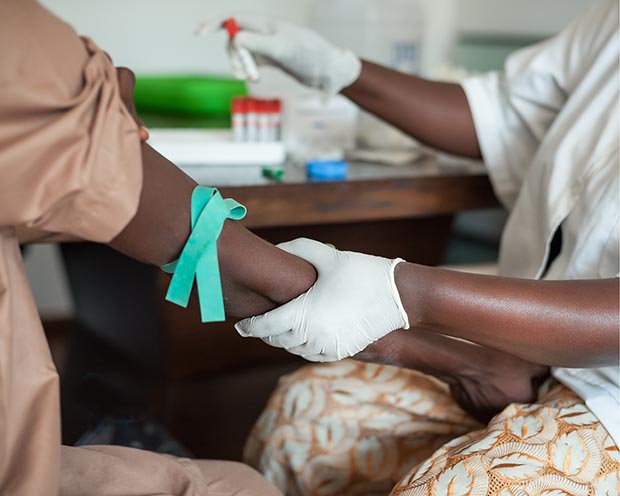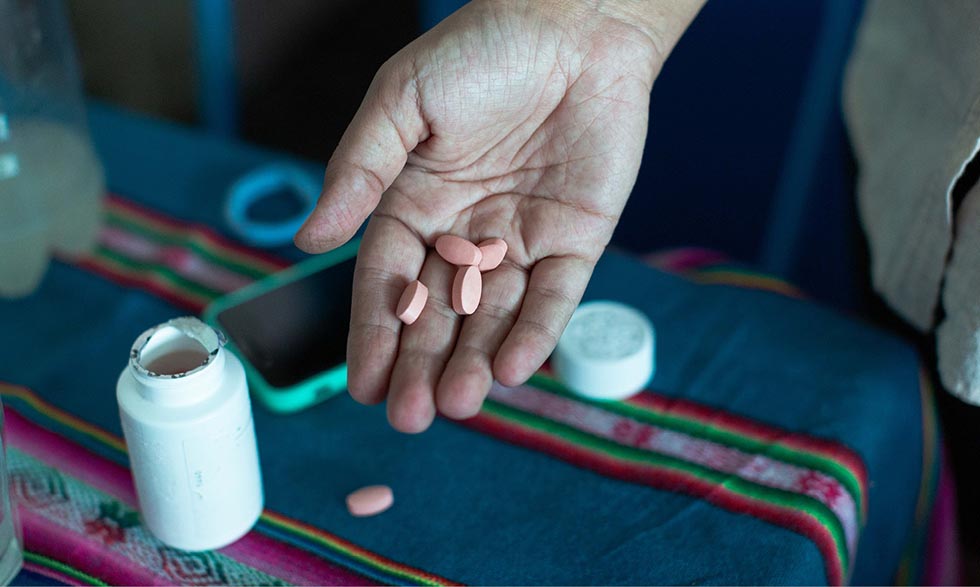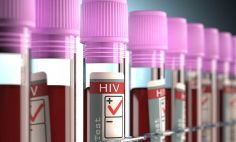Health Topics

Making it easier to get HIV treatment
How NIH researchers are helping remove barriers to necessary medications
HIV research has come a long way since the epidemic began in the 1980s. Today, people with HIV can live long and healthy lives with the right treatment.
The treatment for people living with HIV is known as antiretroviral therapy (ART), which is a combination of medicines taken together. Patients need to take ART for the rest of their lives. This can be hard for people who have financial and other barriers to accessing health care. Recent studies supported by the National Institute of Allergy and Infectious Diseases and the National Institute of Mental Health are helping expand people’s access to ART.
What is HIV?
HIV stands for “human immunodeficiency virus.” HIV harms the immune system by destroying a type of white blood cell that helps the body fight infections. As a result, HIV can put a person at risk for other infections and diseases.
HIV is the virus that causes AIDS, which stands for “acquired immunodeficiency syndrome.” AIDS is an advanced stage of HIV-related disease where the immune system can no longer protect the body. Not everyone with HIV develops AIDS. AIDS is also less common today thanks to advances in HIV treatment.
How does HIV spread?
HIV is spread through having vaginal, anal, or in some cases oral sex without a barrier (such as condoms or dental dams) with someone who has the virus. HIV can also spread from sharing needles with someone who has the virus.
There are other ways to transmit HIV, but thanks to progress in medical care, they are becoming much more rare. Pregnant people with HIV can pass the virus to their child through the placenta, blood and other bodily fluids, or human milk. Blood donations in the U.S. have been tested for HIV since 1985 and the risk of getting HIV from blood donations is extremely low.
Anyone can have HIV, but the groups most affected include gay and bisexual men and Black and Latino people.
What is ART?
While there is no cure for HIV, NIH researchers are working on an HIV vaccine to prevent infection. In the meantime, HIV can be managed with ART. It can reduce the amount of the virus in the body. ART gives the immune system a chance to recover and fight off infections or HIV-related cancers. It also reduces the risk of giving HIV to others.
ART works best when taken exactly as prescribed. Missing a dose can cause the virus to resist the medicines and damage the immune system.

Needing ART less often
Most ART is taken daily. Taking ART every day can be hard for people who do not have reliable housing or food, who have mental illnesses or substance use disorders, or who are involved in the legal system. These groups may not have access to or be able to afford this treatment. They also may not have transportation to get to a health care provider’s office.
Long-acting medications could help people overcome some of these barriers. Researchers in San Francisco studied 133 people with HIV who received long-acting ART injections. The study participants got injections every four to eight weeks between June 2021 and November 2022. Pharmacy staff also reminded them about taking their medication, and researchers checked their health frequently.
Everyone who began the study with HIV suppression—meaning ART kept the amount of HIV in their blood so low that it could not be detected with typical HIV tests—stayed that way , and for most people whose HIV was not suppressed when they enrolled, the virus was suppressed by the end of the study period.

HIV medication works best when taken exactly as prescribed. Missing a dose can cause the virus to become resistant to the medicines and damage the immune system.
ART home delivery for patients in rural areas
Getting access to a clinic for ART can be hard for people who live in rural areas. Even if a person does find care, it may take a long time for them to see a provider. This is common in parts of South Africa, a country where about 1 in 5 adults have HIV.
In a study of 155 people from KwaZulu-Natal, South Africa, those who had ART delivered to their home for a year experienced better HIV suppression than those who went to the clinic. Participants paid a one-time fee, which was based on their income, for the delivery service. The fee came to about $2 to $6 (equal to about 38 to 114 South African rand).
Everyone who used the service said it helped them remember to take ART every day and said they would use the service again.







